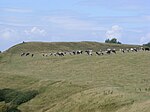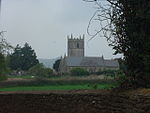Holy Trinity Church, Norton Malreward

The Anglican Holy Trinity Church in Norton Malreward, Somerset, England dates from the late 12th century. It has been designated as a Grade II listed building.The archway between the nave and chancel and the font remain from the original Norman church, however much of the rest of the building has been revised and expanded over the centuries. The 40 feet (12 m) two stage west tower was added in the 15th century with diagonal buttresses to the lower stage and rebuilt, along with much of the church, around 1860 by James Wilson of Bath. It is surmounted by battlements and pinnacles.The church is within a joint benefice with the Church of St Andrew, Chew Magna and the Church of St Michael, Dundry.
Excerpt from the Wikipedia article Holy Trinity Church, Norton Malreward (License: CC BY-SA 3.0, Authors, Images).Holy Trinity Church, Norton Malreward
Church Road,
Geographical coordinates (GPS) Address External links Nearby Places Show on map
Geographical coordinates (GPS)
| Latitude | Longitude |
|---|---|
| N 51.383055555556 ° | E -2.5711111111111 ° |
Address
Holy Trinity Church
Church Road
BS39 4EY
England, United Kingdom
Open on Google Maps










